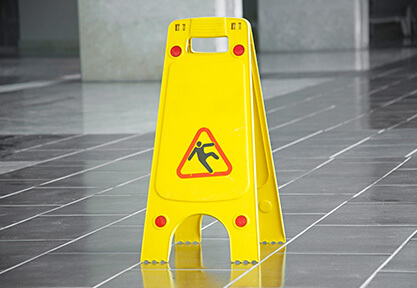On 7 March 2012, the High Court of Australia handed down a historic decision in favour of Ms Kathryn Strong in her claim for damages against Woolworths after a slip and fall accident. This case provides some insight and interesting new challenges to those pursuing a public liability compensation claim against an occupier.
Background
On 24 September 2004, Ms Strong was inspecting pot plants outside an entrance to Big W at the Centro Taree Shopping Centre. The Big W was under the care and control of Woolworths Limited. Being an amputee, Ms Strong required the aid of crutches whilst shopping. At 12:30pm, her right crutch came in contact with a greasy chip and she slipped and fell to the floor. She suffered a severe spinal injury as a result of the incident.
Ms Strong subsequently issued proceedings against Woolworths and the occupier of the shopping Centre in the District Court of New South Wales. The plaintiff obtained a judgment against Woolworths on the basis that it did not conduct cleaning and inspections of the area where the chip fell at a sufficient frequency, but failed against the occupier of the shopping centre, CPT Manager Limited. Woolworths then appealed to the New South Wales Court of Appeal.
NSW Court of Appeal
On appeal, the primary issue before the Court was whether Ms Strong could prove that Woolworths’ negligence was the cause of her spinal injury. The legislative principles that determined this decision are outlined in section 5D of the Civil Liability Act 2002 (NSW). This section states that the ‘negligence is a necessary circumstance of the occurrence of the harm’, and ‘that it is appropriate for the scope of the negligence person’s liability to extent to the harm caused’.
After considering the statutory requirements, the Court held that Ms Strong had not proved that the negligence of Woolworths caused her fall. The Court of Appeal considered that when exercising reasonable care, this required regular periodic inspections at 15 minutes intervals throughout the day. It observed that the greasy chip was probably dropped around lunchtime and that it was probably only on the floor for a relatively short period of time. The Court could not determine that if there had been dedicated cleaning of the area every 15 minutes, that it is more than likely than not that Ms Strong would not have fallen.
High Court
Ultimately, Ms Strong appealed to the High Court of Australia. The High Court upheld her appeal by a majority of 4 to 1. The majority found that the Court of Appeal had made an error when concluding that the chip could not have been on the ground long enough to be identified and removed by a ‘reasonable’ cleaning system instigated by Woolworths.
The Court could only find that the chip was dropped between 8:00am and 12:30pm and that there had obviously been a failure by Woolworths to provide a reasonable system of cleaning, which was ultimately the cause of Ms Strong’s fall.
This decision ultimately highlights the importance of cleaning and inspections of shopping centres. Specifically, the Court states that: “reasonable care require(s) the inspection and removal of slipping hazards at intervals not greater than 20 minutes.”
If you have been injured at a shopping centre or supermarket and you’d like more information about what you can do, call us on 1800 251 800 or make an online enquiry at Stacks Goudkamp for a free, no obligation consultation.



